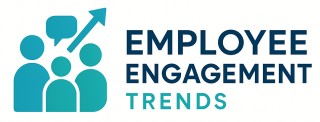
Understanding Employee Assessment Tools
Gaining Insight Through Assessments
In today's competitive business landscape, understanding your employees' skills, performance, and development needs is crucial. Employee assessment tools provide valuable insights that enable managers to make informed decisions regarding talent management and team dynamics.
Employee assessments go beyond traditional performance evaluations. They encompass a wide range of evaluations designed to identify employee strengths and weaknesses, evaluate job performance, and foster opportunities for growth. These tools are instrumental in the hiring process, as they aid in identifying the right fit for a role through pre employment assessments and pre hire evaluations.
Moreover, employee assessments contribute significantly to employee development by pinpointing areas for improvement. They offer a structured way to gather 360-degree feedback, which is vital for developing tailored training programs that nurture employee skills and enhance overall performance. This continuous development is essential for boosting employee engagement and satisfaction at work.
Choosing the right assessment tool can make all the difference. Whether you are exploring problem solving tests, talent assessments, or other forms of evaluation, understanding the specific needs of your workforce is key. These tools not only offer insights into employee performance but also pave the way for management to implement effective employee development strategies.
For those seeking to enhance their approach to performance appraisals, it's helpful to unlock the power of effective phrases for performance appraisals. This resource can guide you in crafting meaningful assessments that resonate with your employees and drive engagement.
Types of Employee Assessment Tools
Diverse Methods for Evaluating Employee Capabilities
The landscape of employee assessment tools offers a diverse array of options, each tailored to specific needs within the organization. These tools are pivotal in evaluating employee skills, performance, and potential for development, ultimately aiding the management in making informed decisions about hiring and employee engagement.- Pre-employment assessments: These are essential in the hiring process, allowing employers to gauge the suitability of candidates before making a hiring decision. By evaluating job-related skills and personality traits, organizations can streamline their hiring decisions effectively.
- Performance evaluation tools: Regular performance assessments give insights into the strengths and weaknesses of employees. These insights are crucial for personal development plans, helping employees to improve specific areas and for the management to provide targeted training opportunities.
- 360-degree feedback: This method involves gathering feedback from various sources, including peers, supervisors, and subordinates. It provides a comprehensive evaluation of an employee's performance and behavior in the workplace, offering a holistic view that fosters employee engagement and talent management.
- Skills tests: Implemented during pre-hire assessments or as part of ongoing employee development, skills tests evaluate the specific competencies needed for a job role. These tests can cover problem-solving abilities, technical skills, or other job-specific requirements.
Implementing Assessment Tools Effectively
Strategically Integrating Employee Assessment Tools for Optimal Results
For organizations aiming to enhance their workplace dynamics, the strategic implementation of employee assessment tools is crucial. The effectiveness of these tools lies in their ability to provide accurate insights into employee performance, skills, and potential areas for improvement. One fundamental step in the process is selecting the right assessment tool tailored to the organizational needs. Considerations include the size of the team, the complexity of the assessments, and the specific objectives—whether for hiring, training, or performance evaluation. A well-structured integration of these tools into the overall management practices contributes significantly to employee development. Here are key strategies:- Align with Business Goals: The assessments employed should directly support the organization's strategic objectives. This ensures that the development tools drive performance directly related to the company's mission.
- Customization and Flexibility: Tools should be adaptable to cater to the diverse job roles within the organization. Customization helps in addressing specific areas that need focus, such as problem-solving skills or team dynamics.
- Employee Involvement: Involve employees in the assessment process. Pre employment tests and regular employee assessments can offer valuable feedback, helping to refine assessment practices and enhance employee engagement.
- Data-Driven Insights: Utilize data gathered from assessments to make informed decisions concerning employee training and development. This can guide the management in designing initiatives that foster continuous growth.
The Role of Assessment Tools in Employee Engagement
Linking Employee Assessment Tools to Engagement
The use of employee assessment tools in workplace environments goes beyond merely evaluating employee performance or skills. Their role in fostering employee engagement is significant, offering insights that shape informed decisions about employee development and management. As businesses seek to refine their hiring and pre-employment assessment processes, understanding an employee's strengths and weaknesses becomes a strategic advantage.
Assessment tools, when implemented effectively, provide data-driven evaluations that can highlight areas of improvement and recognize existing talents. This process not only aids in the hiring decisions but also supports ongoing training and talent development initiatives. When employees see that their contributions and potential are acknowledged and nurtured through tailored development plans, it reinforces their sense of belonging and commitment to the team.
Moreover, incorporating degree feedback and performance evaluations into the work culture keeps employees engaged with their roles and organization. These assessments can also serve as a prelude to more comprehensive employee development frameworks. By aligning job roles with an employee's unique capabilities and career aspirations, companies can cultivate a motivated and cohesive workforce.
The continual evolution of assessment tools ensures that they remain relevant and aligned with current employment trends. By prioritizing problem-solving and aligning assessments with strategic management goals, organizations can enhance the engagement levels of their workforce, ultimately leading to improved employee performance and satisfaction.
Case Studies: Success Stories
Real-World Examples of Effective Employee Assessment Usage
Exploring real-world examples of companies successfully using employee assessment tools provides valuable insights for organizations looking to enhance their workplace dynamics. The successful implementation of these tools often results in improved employee engagement, increased productivity, and better overall performance. One notable example involves a technology firm that implemented pre-employment assessments to better align hiring decisions with business objectives. By integrating a variety of tests focusing on skills, problem solving, and cultural fit, the company reported a substantial improvement in their new hires’ performance. Management attributed these outcomes to a more focused approach in the hiring process, which helped in identifying candidates whose strengths and weaknesses matched their job requirements. Another compelling case highlights a retail giant using 360-degree feedback as part of their ongoing employee development programs. This assessment tool enabled employees and management to collaborate more effectively on performance evaluations and areas for improvement. The continuous feedback loop fostered a culture of open communication, allowing team members to contribute actively to individual and organizational growth. In the healthcare sector, one organization focused on leveraging employment assessments to enhance workforce training and development. By utilizing targeted assessments, they identified gaps in employee skills and subsequently designed training modules tailored to these specific needs. Post-training evaluations indicated marked improvements in service delivery and employee satisfaction, underscoring the value of informed decisions in employee development initiatives. These case studies illustrate how strategic use of employee assessment tools can lead to successful outcomes. By understanding performance metrics and employee needs, businesses can better manage their talent pool and enhance overall employee engagement.Future Trends in Employee Assessment
Adapting to the Future of Employee Assessment
- Artificial Intelligence and Machine Learning: AI-driven tools are becoming an integral part of the assessment process. These technologies offer improved accuracy in evaluating employee skills and performance by analyzing large data sets and identifying patterns that might be missed by traditional methods.
- Real-Time Feedback and Continuous Evaluation: Moving away from the periodic review cycle, continuous performance evaluation allows management to provide timely feedback. This fosters a culture of ongoing development and supports employee engagement by highlighting areas for immediate improvement and recognizing achievements.
- Remote Work and Virtual Assessments: With the rise of remote work, virtual assessment tools have gained traction. These tools facilitate pre-hire and employment assessments, ensuring that organizations can evaluate talent irrespective of location, thereby supporting a more diverse and flexible hiring process.
- Personalized Learning and Development: Going beyond one-size-fits-all training programs, future tools will focus on personalized development. By using data obtained through assessments, organizations can tailor training and development initiatives to individual employee needs, enhancing their skills and boosting morale.
- Integration with Other HR Systems: Future assessment tools are set to seamlessly integrate with existing HR systems, including those used for employee performance management and training. This interconnected approach streamlines data flow, providing a holistic view of employee performance and development.












